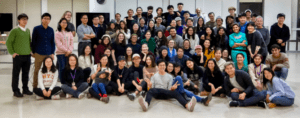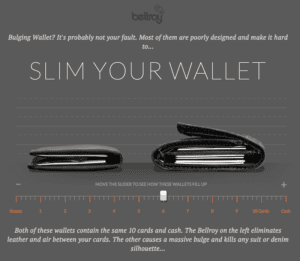My group’s first definition:
At least two actors, an animal actor being one, engaging each other with many different inputs and outputs causing both being interdependent of each other.
My extension on that definition when writing the individual blog post:
At least two actors, an animal actor being one, engaging each other with many different inputs and outputs causing both being interdependent of each other. Crawford states that there are different levels of interaction, which I agree with.
( “The Art of Interactive Design” by Chris Crawford )
My definition after completing the Midterm:
My definition of interaction needs to have one of the actors in a two to more group be human and allow there to be space for different levels of interaction.
My current development and ideas on interaction:
I feel that my definition has evolved to be more flexible yet complicated from the initial group definition. The flexibility comes from the idea of there being layers, but complicating it by having one of the actors human. From the Interaction of Design Foundation agrees that interaction is a human to production conversation. So the human element is important
The first interactive project I researched did not exactly inspire my idea for the Final Project, but after reading it taught me many things. The project is “Click Canvas, an Interactive Wall” by Natthakit Kangsadansenanon. This project taught me the challenges he faced when he was creating his large project, such as when he had the debugging for hours and could not eat. Also the challenge he faced directing people. with his experience, I have been motivated to not give up when I do the Final Project (lots of giving up was felt during the midterm) and that working with people can be hard. I also learned with communication in creating being clear in what you say is very important. This lines up with my definition of interaction because this type of interaction has a living part (the people) who were allowed through the use of touch as an input and color as outputs to draw/ create!
the second project that did fule my current idea for the Final project is actually a combination of two I saw at last semester’s IMA show. The first one was where two people were competing by banging on the desk to send as many vibrations to the vibration sensor. The one who banged the most won. The second was from a friend of mine where a person had to wear a headband with a type of motion sensor that could sense that back and forth movement of the person’s head. On the screen, the player would be controlling a serpent and was trying to avoid things falling from the sky to get to a finish line. From these two sprouted my idea to use the vibration sensors to move a character to a desired goal. Both of these projects are in line with my definition of interaction. The first one had two human actors work against each other to send more vibration input than the other. It also made the people very competitive, as so did the second project making the interaction meaningful through fun. The second project created a goal for the person to get to the finish line with the challenge of being able to move your head back and forth fast enough (something I could not do). Both interactions depend on the type of inputs from the human side to decide who was either a winner or was getting to the finish line.
Here is a picture of the 2018 fall semester class that inspired me:

one last project that I researched and found on a website that claimed to be listing “8 Exceptional Examples of Interactive Product” by Cassandra Michael. Ironically I found a product that was supposed to be an exceptional example of an interactive product; however, it did not have the one requirement from my already fluid defintion of interaction. That was the Bellroy ‘slim your wallet’ was missing the living component. The wallet I believe cannot be categorized as an interactive where there is no transaction of ideas of feeling. The wallet is just slim. On their website, they have a feature where you can compare your fat wallet to the slim one. Here is a type of interaction because a human has to compare the two visually, but the wallet itself cannot be an interactive product. I also believe that the use of interactive may be defined differently, but for my definition, the word interactive is used incorrectly.

My new definition of interaction I believe needs to be even more flexible by including all types of alive life as one of the actors, but still complicated that one actor must be able to respond with; for example, excitement or with a physical change. I want to change my idea of different levels of interaction to different types of interaction and add that to my definition of interaction. Here I am now disagreeing with Crawford by stating that no single interaction is better than another, but the interaction is just expressed differently. For example, in the Interaction of Design Foundation’s definition of interaction, there is a list of 5 dimensions of interaction design that work together to create the overall end product. Different types of interaction are not in competition, but are in use for different desired outcomes. I believe that my new definition of interaction is very inclusive. I am not trying to make a concrete definition for interaction. I want to also point out that the Interaction of Design Foundation states that a broad definition exists because the field is broad itself. I would hope that people use a flexible concept of interaction to make something that has a positive impact.
websites used:
https://www.interaction-design.org/literature/article/what-is-interaction-design
https://www.hackster.io/natthakit-kim-kang/click-canvas-an-interactive-wall-04332c
https://usabilla.com/blog/8-exceptional-examples-of-interactive-product-pages/
https://bellroy.com/explore/slim-your-wallet